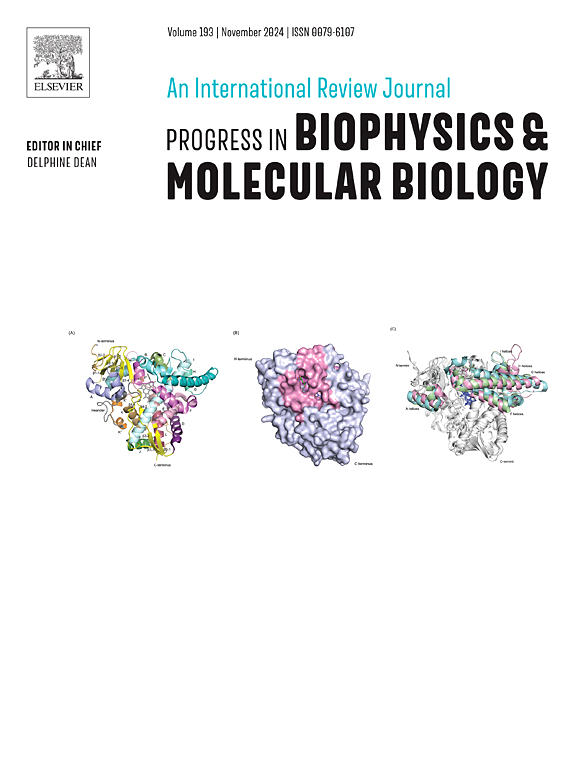A review of the current status and future prospects of the bone remodeling process: Biological and mathematical perspectives
IF 4.5
3区 生物学
Q2 BIOCHEMISTRY & MOLECULAR BIOLOGY
Progress in Biophysics & Molecular Biology
Pub Date : 2024-10-17
DOI:10.1016/j.pbiomolbio.2024.10.001
引用次数: 0
Abstract
This review dives into the complex dynamics of bone remodeling, combining biological insights with mathematical perspectives to better understand this fundamental aspect of skeletal health. Bone, being a crucial part of our body, constantly renews itself, and with the growing number of individuals facing bone-related issues, research in this field is vital. In this review, we categorized and classified most common mathematical models used to simulate the mechanical behavior of bone under different loading and health conditions, shedding light on the evolving landscape of bone biology. While current models have effectively captured the essence of healthy bone remodeling, the ever-expanding knowledge in bone biology suggests an update in mathematical methods. Knowing the role of the skeleton in whole-body physiology, and looking at the recent discoveries about activities of bone cells emphasize the urgency of refining our mathematical descriptions of the bone remodeling process. The underexplored impact of bone diseases like osteoporosis, Paget's disease, or breast cancer on bone remodeling also points to the need for intensified research into diverse disease types and their unique effects on bone health. By reviewing a range of bone remodeling models, we show the necessity for tailor-made mathematical models to decipher their roots and enhance patient treatment strategies. Collaboration among scientists from various domains is pivotal to surmount these challenges, ensuring improved accuracy and applicability of mathematical models. Ultimately, this effort aims to deepen our understanding of bone remodeling processes and their broader implications for diverse health conditions.
回顾骨重塑过程的现状和未来前景:生物学和数学视角。
这篇综述深入探讨了骨重塑的复杂动态,将生物学见解与数学视角相结合,以更好地理解骨骼健康的这一基本方面。骨骼是人体的重要组成部分,会不断自我更新,随着越来越多的人面临与骨骼相关的问题,这一领域的研究至关重要。在这篇综述中,我们对用于模拟不同负荷和健康状况下骨骼机械行为的最常见数学模型进行了分类和归纳,从而揭示了骨骼生物学不断发展的前景。虽然目前的模型已经有效地捕捉到了健康骨重塑的本质,但随着骨生物学知识的不断扩展,建议对数学方法进行更新。了解骨骼在全身生理学中的作用以及最近对骨细胞活动的发现,都强调了完善骨重塑过程数学描述的紧迫性。骨质疏松症、帕吉特氏病或乳腺癌等骨科疾病对骨重塑的影响尚未得到充分探讨,这也表明我们需要加强对不同疾病类型及其对骨骼健康的独特影响的研究。通过回顾一系列骨重塑模型,我们表明有必要建立量身定制的数学模型,以破解其根源并改进患者治疗策略。要克服这些挑战,确保提高数学模型的准确性和适用性,来自不同领域的科学家之间的合作至关重要。最终,这项工作旨在加深我们对骨重塑过程及其对各种健康状况的广泛影响的理解。
本文章由计算机程序翻译,如有差异,请以英文原文为准。
求助全文
约1分钟内获得全文
求助全文
来源期刊

Progress in Biophysics & Molecular Biology
生物-生化与分子生物学
CiteScore
8.60
自引率
7.90%
发文量
85
审稿时长
85 days
期刊介绍:
Progress in Biophysics & Molecular Biology is an international review journal and covers the ground between the physical and biological sciences since its launch in 1950. It indicates to the physicist the great variety of unsolved problems awaiting attention in biology and medicine. The biologist and biochemist will find that this journal presents new and stimulating ideas and novel approaches to studying and influencing structural and functional properties of the living organism. This journal will be of particular interest to biophysicists, biologists, biochemists, cell physiologists, systems biologists, and molecular biologists.
 求助内容:
求助内容: 应助结果提醒方式:
应助结果提醒方式:


